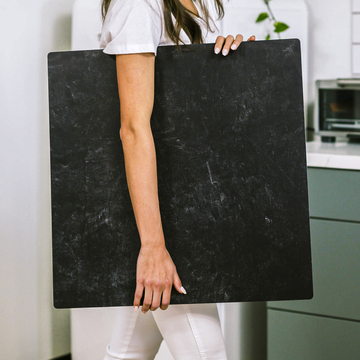As a product photographer with over a decade of experience, I've learned that the difference between a good shot and a great one often comes down to what's behind your subject. Today, I'm pulling back the curtain on the fascinating science that makes some background boards vastly superior to others.
The Magic is in the Microscopic
Think of your background board like the screen of your smartphone. Just as phone manufacturers obsess over display technology, professional background materials are engineered at the microscopic level. When light hits a surface, it doesn't just bounce off like a tennis ball - it interacts with countless tiny irregularities that you can't see with the naked eye.
The Professional's Secret: Surface Science
Remember those frustrating hot spots that keep showing up in your photos? They're not just bad luck - they're physics in action. Professional-grade backgrounds use carefully engineered surfaces that scatter light evenly, similar to how a lighthouse's fresnel lens distributes its beam.
Pro Tip: To test a background's light-handling properties, shine a focused beam of light at it in a dark room. The more evenly it disperses the light, the better it will perform in your shots.
Density Matters: Why Heavier Often Means Better
Ever noticed how cheaper backgrounds can make colors look "off"? Here's why: Less dense materials allow light to penetrate and bounce around inside before reflecting back to your camera. It's like trying to get a crisp reflection in cloudy water versus a mirror.
Benefits of High-Density Boards
- Richer blacks
- More accurate colors
- Consistent results across different lighting conditions
Real-World Applications
Food Photography
- Choose matte surfaces for minimal reflection
- Look for temperature-stable materials
- Opt for slightly textured surfaces to add depth
Jewelry Photography
- Consider boards with minimal surface texture
- Choose materials with high density for better contrast
- Look for neutral light interaction properties
The Bottom Line
While it's tempting to save money on background boards, understanding the science behind them helps explain why professional-grade options are worth the investment. They're not just pieces of colored material - they're carefully engineered tools that can make or break your shots.
Remember: The best background is one that you never have to think about during a shoot because it's doing its job perfectly.
Want to learn more about the technical side of product photography? Let me know in the comments below what aspects you'd like me to explore in future posts.


